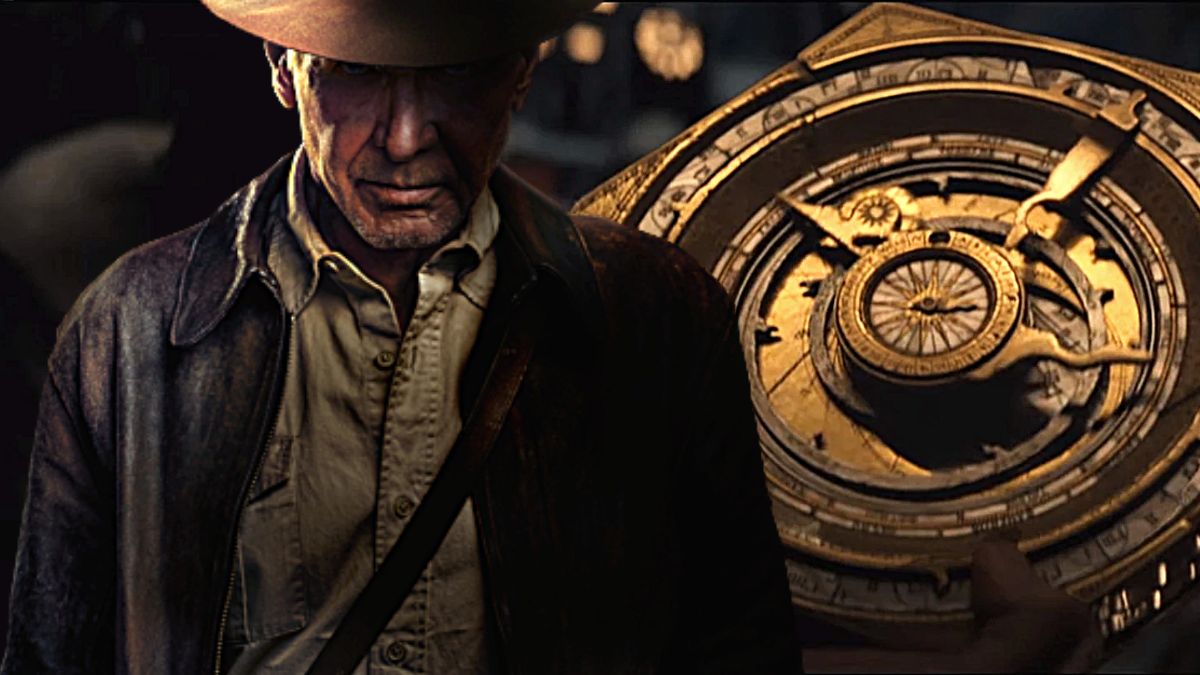Now that everyone’s favorite adventuring archeologist is once again on the big screen with Indiana Jones and the Dial of Destiny, let’s take a look at all of the MacGuffins in the series and their real-world connections.
Each Indiana Jones film features an ancient artifact of some kind that holds some supernatural power — usually one coveted by Nazis. In each adventure, it is up to our roguish tomb-defiler, Indiana Jones, to rise to the occasion to defeat this world-destroying threat and prove himself the hero.
The films, which pay homage to classic adventure serials, have become so influential at this point that temple-raiding adventurers clad in tan leather have become a trope in our pop culture. Indy’s impact can be seen in everything from the Uncharted video game series to Nicolas Cage’s National Treasure franchise and countless others. But what you might not know is that the MacGuffins in the Indiana Jones franchise are based on either real-world artifacts of antiquity or legends that stretch back to ancient times — albeit endowed with fictionalized supernatural abilities.
Let’s count down all of the central MacGuffins in each Indiana Jones film and trace their real-life counterparts. For this list, we will go in reverse chronological order, going from the latest movie to the first film. We will also be skipping any video game installments, board games, novelizations, or The Young Indiana Jones Chronicles TV show along the way because that would just make this list way too long.
Indiana Jones and the Dial of Destiny — The Antikythera mechanism
Indiana Jones and the Dial of Destiny has for its main MacGuffin a fictional ancient device, the Archimedes Dial, that is able to be used for time travel by way of predicting the location of wormholes. In real life, the Antikythera mechanism — the film’s source of inspiration — was discovered by Greek sponge divers around the turn of the 20th century. The 2,000-year-old artifact was immediately considered enigmatic to most scholars but its mysteries seemed to only deepen as the years went on, as Smithsonian Magazine explained.
For instance, when the Antikythera mechanism was first discovered it only appeared on the surface as a degraded clump of metal. But when it cracked in half in 1902, the intricate network of gears revealed itself underneath. Thanks to innovations in technology, the device has been subjected to X-rays and CT scans since its initial discovery. Today, scientists believe that the ancient Greek device is the most advanced mechanism of its time. Considered the world’s first known computer, the Antikythera device predicted events in the cosmos such as eclipses and even when future Olympics events were scheduled.
Indiana Jones and the Kingdom of the Crystal Skull — Quartz skulls
Are the crystal skulls from the titular Indiana Jones adventure from 2008 a real thing? While there are real artifacts made out of quartz and shaped like skulls — 13 of them found around the world to be exact — they have a dubious history. Originally claimed to have a connection with ancient Aztecs, Musée du quai Branly in Paris subsequently clarified that the skulls were likely fabricated in the 19th century, according to Wired. Explorer Alphonse Pinart originally sold the crystal skull he had to the museum in 1878. The propagation of the crystal skull myth as it relates to ancient Mexico can be traced back to fraudulent claims made by an archeologist, Eugène Boban, according to Discover Magazine. Even though scientists now believe the skulls were made with modern jewelry-making tools like rotaries, that has not stopped people like Dan Akroyd (who cameoed in Temple of Doom, by the way) from being obsessed with them to the point of designing his vodka brand after them, as he explained in an interview with Leigh Valley Live. Suffice it to say, there’s no evidence the crystal skulls have any connection to interdimensional beings or have the ability to give you telepathic powers, despite what Indiana Jones and the Kingdom of the Crystal Skull would have you believe.
Indiana Jones and the Last Crusade — The Holy Grail (Christian lore/disputed)
The Holy Grail is the central MacGuffin in Indiana Jones and the Last Crusade and allegedly endows those who drink from it with immortality in the film. In real life, it is based on the goblet that Jesus Christ drank out of during the last supper, a vessel that was later used to collect his blood. There is a brief mention of the grail in the Bible but it was given additional layers of mythology during the medieval ages, including connecting it to King Arthur. While there is no evidence that a Holy Grail exists in real life, claims of its discovery have popped up throughout history, including as recently as 2014, according to History. In fact, much like the plot of Last Crusade, the Nazis were very much interested in finding the chalice. Adolph Hitler believed the Holy Grail not only existed, but that it could imbue him with supernatural abilities and dispatched his S.S. henchman Heinrich Himmler to search for it in Spain during World War II, according to Daily Mail. Of course, no such grail was ever found by the Germans.
Indiana Jones and the Temple of Doom — Shiva Lingams (Hindu lore)
The Sankara Stones from Indiana Jones and the Temple of Doom was the set of gems sought by Amrish Puri’s cult leader Mola Ram, which he planned to use to conquer the world, essentially. Although the powers of the stones are a bit vague in the film, one of them brought lush crops and prosperity to a village, which was later stolen by Mola. The film’s central baddie also enlisted the help of child slaves to search for the other stones. When all of them are collected, their true power is unlocked.
In real life, Hindu lore served as the inspiration for the Sankara Stones, as Empire pointed out. It is based on the Sivalinga, “the symbol of the Hindu God Shiva,” who passed on to the priest Shankara five stones imbued with magical powers to battle evil after he ascended Mount Kalisa. Even though the Sankara Stones from the movie are not real, it is inspired by symbolic objects in Hinduism called Shiva Lingams, according to Project Archeology.
Raiders of the Lost Ark — The Ark of the Covenant (Christian lore/disputed)
The Ark of the Covenant is the mysterious box both the Nazis and Indiana Jones are chasing after in Raiders of the Lost Ark. The film explains it is the container where the original stone tablets that contained the Ten Commandments are stored. Not only that, but the Ark also contains the power of God himself, with the film culminating in the box emitting a powerful series of beams that destroys the Nazi archeology team that uncovered it, including one villain getting his face melted off.
Like the Holy Grail, the Ark is mentioned in the Bible but its existence is disputed among scholars and archeologists alike. Due to its consistency of description in multiple parts of the Bible, this is the main reason people believe it must be real, according to Penn State University. According to the Book of Exodus, it is described as a wooden box covered in gold, about 4 feet by 2 feet by 2 feet in dimension, and features wooden poles to carry it since those who touched it directly were said to perish. Not only that but it is said that the Ark “brought whole cities to their knees” when the Israelites brought it into battle, according to Encyclopedia Britannica. There are multiple theories about where the Ark may have ended up, including that it went missing from Jerusalem when Babylonians raided the country in the 6th century. The Ethiopian Orthodox Tewahedo Church has even claimed the Ark is being closely guarded to this day by a high priest who is not even allowed to enter its chamber. Other theories include that the Ark was destroyed in battle, stolen by an Egyptian Pharaoh (a plot point in Raiders), or hidden away — by divine intervention or other means — prior to the Babylonians’ sacking of Jerusalem mentioned in the Bible.
As an aside, the Headpiece to the Staff of Ra that is featured in Raiders, which is used to refract the light in a map room that reveals the Ark’s location, is fictitious but with a real-world inspiration. The design is taken after King Tutankhamun’s earrings that were discovered in the ancient Pahroe’s tomb, according to IndyGear.com.







